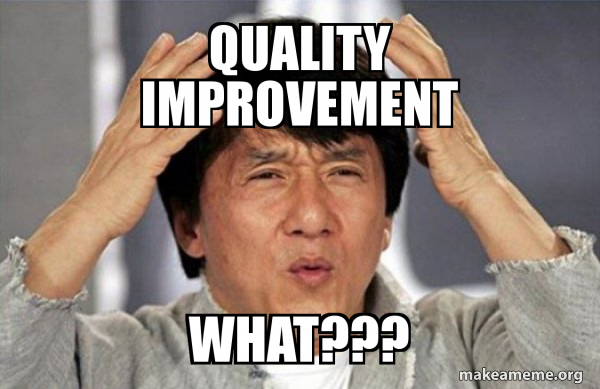Quality Improvement
Published (updated: ).

Failures of action, or unintentional actions, are classified as skill-based errors. This error type is categorized into slips of action and lapses of memory. Failures in planning are referred to as mistakes, which are categorized as rule-based mistakes and knowledge-based mistakes.
Skill-based errors
Skill-based errors tend to occur during highly routine activities, when attention is diverted from a task, either by thoughts or external factors. Generally when these errors occur, the individual has the right knowledge, skills, and experience to do the task properly. The task has probably been performed correctly many times before. Even the most skilled and experienced people are susceptible to this type of error. As tasks become more routine and less novel, they can be performed with less conscious attention – the more familiar a task, the easier it is for the mind to wander. This means that highly experienced people may be more likely to encounter this type of error than those with less experience. This also means that re-training and disciplinary action are not appropriate responses to this type of error.
Mistakes
Mistakes are failures of planning, where a plan is expected to achieve the desired outcome, however due to inexperience or poor information the plan is not appropriate. People with less knowledge and experience may be more likely to experience mistakes. Mistakes are not committed ‘on purpose’; as such, disciplinary action is an inappropriate response to these types of error.
Mistakes can be minimised and mitigated through robust competency assurance processes, good quality training, proactive supervision, and a team climate in which co-workers are comfortable observing and challenging each other.
Mistakes can be rule-based or knowledge-based. The different types of mistakes are explained below through the use of an example from NOPSA Safety Alert 28, where a construction vessel failed to avoid a cyclone. This example demonstrates how multiple errors at various levels of an organisation can interact to lead to a hazardous event.
Knowledge-based mistakes result from ‘trial and error’. In these cases, insufficient knowledge about how to perform a task results in the development of a solution that is incorrectly expected to work.
Example – Knowledge-based mistake
A construction vessel was unable to avoid a cyclone because the operator failed to initiate preparations to evacuate in a timely manner. The risk of tropical lows rapidly developing into cyclones within the Timor Sea location was not well understood, with insufficient time allocated for evacuation tasks.
Rule-based mistakes refer to situations where the use or disregard of a particular rule or set of rules results in an undesired outcome.
Some rules that are appropriate for use in one situation will be inappropriate in another. Incorrect application of a good rule occurs when a rule has worked well on previous occasions, so it is applied to a similar situation with the incorrect expectation that it will work.
Example – Incorrect application of a good rule
The operator of the construction vessel planned for cyclone response times based on typical North West Shelf cyclone development patterns. These time frames were then applied to a Timor Sea location. In this case, a good rule regarding evacuation time frames was incorrectly applied to a different location.
Sometimes rules are inappropriate or incorrect, and adherence leads to negative outcomes. In these cases, application of a bad rule does not deliver the desired outcome. Bad rules may be created based on incorrect knowledge (i.e. knowledge-based mistakes), or a good rule may become bad following changes that are not managed appropriately.
Example – Application of a bad rule
The two mistakes described above were incorporated into the Cyclone Response Procedure. When applied, this bad rule allowed insufficient time for evacuation and associated preparation times before the tropical low developed into a cyclone. It is fortunate that no injuries were experienced during this situation.
Reducing errors should always be a goal. After each call, a good EMS provider should debrief or relive the incidents of the call and look for areas for improvement. A good EMS provider should always question assumptions. An assumption is an opinion that is treated as fact. Good EMS providers should look for facts and not the assumptions of others. Checklists, illustrations, and protocols should be used whenever possible to decrease the possibility of mistakes.
When in doubt, ask for help. Call a supervisor, another crew, dispatch, or even medical control.
